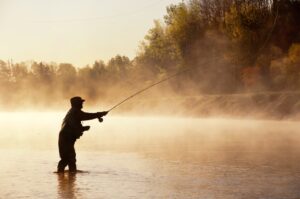It happens all too often: tragedy following a collision. Sadly, the impacts between hulking cargo ships and non-commercial fishing boats continue.
Loaded with drama, these events give journalists prime time content: injuries, deaths, rescues, and of course, villains. Yes, there is plenty of blame to go around. But accusations only fuel the fire.
In just a few months, there have been dozens of scandalous headlines:
Cargo ship collides with fishing vessel: should have posted lookout
Cargo ship crew face charges over collision that sank fishing boat
Reckless Singapore ship behind fatal boat crash off Mangaluru coast
So, how do you navigate the media’s blame-game?
True, the International Maritime Organisation’s (IMO) Collision Regulations (COLREGs) provide a rule book to the conversation. And yes, fishing vessels are often in ‘the wrong.’
But does stressing fault win public support? The headlines above would suggest otherwise.
Remember, not everyone sees collisions like a seafarer would.
Even those navigating the oceans have vastly different attitudes. For shipping, the goal is moving products. For fishermen, the aim is catching fish. And these distinctions have, on more than one occasion, caused chaos.
Take last year’s collision between the cargo ship, EDMY, and the prawn trawler, TORNADO. With the TORNADO busy fishing, her skipper refused to move off the EDMY’s course. Yet even after absorbing the collision, suffering hull damage, and taking on water, the TORNADO’s crew remained fixated on hauling catch. They even warned the EDMY to stay clear of providing support until they completed landing their fish.
While the TORNADO’s disabled AIS contributed to the collision, that didn’t stop the Norwegian Safety Investigation Authority from acknowledging the risk that transmission poses to fishermen. For those wishing to keep their fishing grounds secret or avoid pirates, a collision may be unavoidable collateral.
For the public, yes, these fishermen may seem obsessed with fish, but their economic desperation is… relatable.
And so, fishermen are cast as blissfully ignorant: financially or educationally unable to learn the COLREGs and subjected to a top-down system. Other outlets might take a David vs. Goliath approach, where fishing is seen as an ancient tradition and global shipping as an unwanted foreign influence.
The point is, each collision can be told as as a story of more than rulebook non-compliance. Circling back to the original question: how should you communicate about a collision?
Lawfulness is important, but it must be paired with understanding: What do the local people care about? How do they see the situation? What are their criticisms? Politics, economics, and history are, in many ways, easier to figure out than international law.
When making a communication plan, think about what is relatable – not only to seafarers, but also the public:
- Can you highlight your vessel’s respect of zoning (e.g. local traffic lanes), which may be more relevant than COLREGs?
- Are there locally recognised place-names that are worth referencing?
- What about using the ancestral name for fishing boats?
- Communicating in a local language goes a long way to building local connection
But the response will have to go further. It will have to grab at emotion:
- Does your company share values with the impacted community?
- Can you highlight your company’s seafaring tradition?
- In some cases, it might be appropriate to express regret – even if you are not at fault
- Finally, consider commenting on your company’s priorities (e.g. safety of life at sea)
At the end of the day (if not at dawn), your goal is to win the hearts of your audience, not just parade law-abiding operations.
Captivating public opinion is about more than dominating an argument. It takes emotional intelligence and genuine connection – two of the most important tools in a communication plan.








